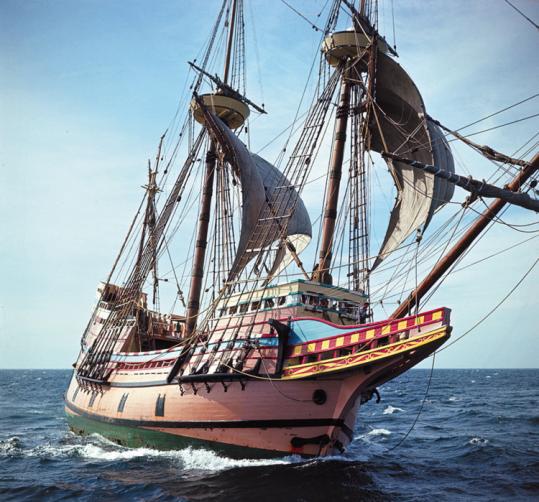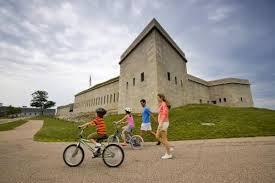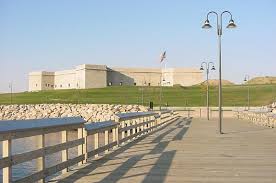


The eastern Connecticut city we know as Norwich was founded in 1659 by a group of English settlers, 69 founding families, who came there from Old Saybrook and bought land from the Mohegan Tribe. As important as that date is to Norwich, its significant and varied history hardly begins there.
Sixteen years before the English arrived, Mohegan warriors, led by Uncas repulsed an attack by a numerically superior force of Narragansetts led by Miantonemo. It has been called The Battle of The Great Plain , an area we know today as the East Great Plains section of Norwich.
The Mohegans, who learned of the approaching army, quickly prepared for battle. In short order, they routed the invaders and tracked down their leader whom they later killed where he was captured, but only after Uncas got the green light from the English.
The battle that helped the English Puritan settlers consolidate their hold on southern New England, is largely forgotten, but visitors interested in early Connecticut history can visit two battle-related sites.
They could not be more different. One, Indian Leap, is at Yantic Falls, not far from where the deadly enemies squared off. Even today almost 400 years later it is visually striking. A foot bridge spanning the raging waters below affords visitors a direct view of the place where fleeing Narragansetts leapt to their deaths from a high escarpment in a desperate attempt to elude the pursuing Mohegans.
Across town in the city’s Greenville section, visitors can walk the site where Miantonemo was captured and later killed. By comparison, it is more modest, even mundane in appearance, but it is, arguably, the more significant location of the two. The capture and subsequent execution of Miantonemo removed an opponent, not only of the Mohegan tribe, but the English. He was trying to reverse the tide of English conquest by uniting the indigenous peoples who stood in their way. It was a dispute with Uncas who favored cooperation with the English that would lead to the fateful encounter in Norwich. (Ironically, the two bitter enemies were briefly united with the English only six years earlier in the Pequot War.)
A small cut-granite monument erected two hundred years after Miantonemo’s death is perched atop a natural rock outcropping at the Greenville capture site. An information tablet outlines the significance of what took place there. The location on a dead-end street in a residential neighborhood offers an opportunity to reflect on a part of the long and sometimes bloody march to Connecticut we know today.
Although Miantonemo lost the battle and shortly thereafter his life, he has been remembered in a number of ways. These include a large public park in Newport, Rhode Island that bears his name, Miantonomi Memorial Park. Located on a hilltop that was later used a lookout spot during the Revolutionary War, it was the Narragansett leader’s sea of power until it was purchased by English colonists in 1637.
Although the spelling of his named varied, the U.S. Navy would name four ships after the respected Narragansett leader, including one, the USS Miantonomoh, that assisted in the D-Day landings at Normandy in World War II, and would be sunk by enemy action three months later off the coast of France.
Uncas certainly has not been forgotten, either. In 2008, the Mohegan Tribe dedicated a memorial at a traditional burial site in Norwich that had been desecrated in centuries past. Located at the intersection of Washington and Sachem streets, not far from the Indian Leap, the park is at the edge of the Royal Mohegan Burial Ground, where it is believe Uncas himself was laid to rest.
In 1833, a cornerstone to Uncas set there attracted national figures, including President Andrew Jackson and his Secretary of War, Lewis Cass. In 1840 money was raised to erect a stone obelisk at the site in memory of Uncas and in 1906 Buffalo Bill visited to honor the famed Mohegan leader. Two years later President William Howard Taft visited the Uncas Monument.
The park created in recent years by the modern Mohegan Tribe after a long struggle is a place of peace and reflection, a fitting remembrance of those who once lived and sometimes fought near there.
Directions to the Royal Mohegan Burial Ground and Indian Leap:
Take I-395 to exit 81E (state routes 2/32). At the end, turn right and follow Rts 2/32, Washington Street, to the intersection of Sachem Street, location of the burial ground. Afterwards, drive down Sachem Street for about 1/4 mile. Make a left onto Yantic Street. Indian Leap and the Yantic Falls are on the right. There is parking and the site is open year round.
Directions to the Miantonemo Monument:
Take I-395 to exit 81E and go to the end of the divided highway. Once there, go straight Instead of turning right as you would for the Indian Leap site and the Royal Mohegan Burial Ground. This will put you on Harland Road (Route 169). Drive until you reach Hunters Road, where you will take a right. Stay on that until the intersection of Norwich Road (Route 12), where you turn right. The monument is on Elijah Street, a left turn opposition St. Joseph’s Cemetery.














